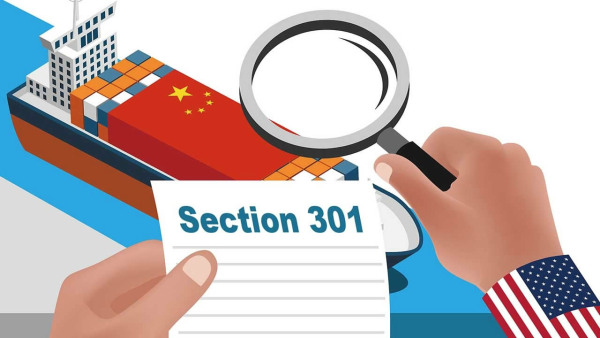Significant changes to the Reconciliation Entry Program are scheduled to soon take effect. Included among these changes are the elimination of blanket entry flagging, a simplification of the application process and changes to the reconciliation transmission procedures. It is imperative that importers and their customs brokers utilizing the reconciliation program understand the impact of these changes in advance of their implementation.
As part of its transition from the Automated Commercial System (“ACS”) to the Automated Commercial Environment (“ACE”), U.S. Customs & Border Protection (“CBP”) has announced changes to the way in which importers will file reconciliations and CBP will process them. CBP’s current target date for the modifications to become effective is January 1, 2017.
As discussed below, the most immediate change for current reconciliation participants relates to the way CBP entries will be identified, or “flagged,” for reconciliation. CBP will no longer automatically “blanket flag” entries for reconciliation. Instead, importers will be responsible for flagging their own entries. Therefore, it is critical that reconciliation participants coordinate with their customs brokers to ensure that any entry subject to reconciliation reporting will be appropriately flagged by the broker. Brokers (and self-filers) will need to either manually flag each entry summary or program their own software to perform blanket flagging.
Additional modifications announced by CBP include changes to the way new participants will join the reconciliation program and the manner in which reconciliation entries will be filed.
Background
Now in its eighteenth year, CBP’s reconciliation program is used by importers to report financial adjustments, including year-end transfer price adjustments, assists, and dutiable royalties (as well as other information relevant to the valuation of merchandise) to CBP after the entry summary has been processed. Prior to reconciliation, importers were required to provide this information via prior disclosure or similar ad hoc reporting.
Under the reconciliation program, the “flag” (notice of intent) identifies that there are issues to be reconciled later, which are separated from the entry summary so that the entry may otherwise be finalized and liquidated. The flag indicates to CBP that a specific data element on the entry summary (e.g., entered value) is not final at time of entry and is subject to future adjustment. Importers have up to 21 months to file a reconciled entry summary (12 months for certain FTA claims). The reconciliation is itself an entry and after CBP review, the reconciliation entry itself will liquidate, with the reconciliation resulting in a single refund or payment of duties, taxes and fees, as appropriate.
Importers may use reconciliation to seek post-entry section 520(d) refunds under the North American Free Trade Agreement (and certain other FTAs), to report changes relating to merchandise imported under Heading 9802, and to report valuation issues, including but not limited to upward and downward transfer price adjustments.1 With respect to tariff classification, an importer may use reconciliation if it has separately established the classification issue by means of a protest, pending administrative ruling, or pending court action.
Modifications to the Program Announced by CBP
Starting on or about January 1, 2017, CBP will implement the following modifications relating to the filing of reconciliation entries designed to further automate the process and remedy existing problems with the program. Those changes include:
• Application Process – New participants will no longer need to apply to CBP Headquarters to join the program. Instead, interested importers will simply need to (1) have a continuous bond on file (single transaction bonds are not allowed); (2) file a reconciliation bond rider; and (3) begin flagging entries for reconciliation.
• Entry Flagging – As noted above, CBP will no longer blanket flag entries. Instead, importers will be responsible for flagging their own entries. Customs brokers (and self-filers) will need to either manually flag each entry summary or program software to perform blanket flagging.
• Reconciliation Transmission – Reconciliation entries will be submitted electronically only in ACE and will not be accepted in ACS. Further, a hardcopy of the line item spreadsheet on disc will no longer be required.
• Reconciliation Reporting – In what CBP expects to be an improvement over the old system, ACE will automatically populate the original value, duties, taxes, and fees relating to the underling entries covered by the reconciliation. Importers will be responsible for reporting the reconciled amounts, as the original entry data will be pulled automatically from the associated underlying entries covered by the reconciliation. CBP has also added a number of program indicators to the reconciliation transmission, requiring importers to provide certain additional information when transmitting a Type 9 Reconciliation Entry (for example, CBP has added fields to indicate whether a prior disclosure has been filed against one or more of the flagged entries covered by the reconciliation and to indicate the relevant protest number, administrative ruling number, or court action number, when the reconciliation relates to a classification issue, etc.).
• ITRAC Reports – CBP will no longer issue Importer Trade Activity (“ITRAC”) reports detailing an importer’s entry activity on an entry line-by-line basis. Instead, ITRAC reports will be replaced by ACE reports.
Certain elements of ACS Reconciliation will remain the same once CBP transitions to ACE Reconciliation, including:
• the types of issues subject to reconciliation (e.g., value, certain classification issues, 9802, and FTA issues);
• the deadlines for filing (12 months for entries flagged for FTA issues, 21 months for entries flagged for other reconciliation issues such as value, classification, and 9802); and
• the types of reconciliation filings (entry-by-entry and aggregate).
If you have any questions regarding this development, please contact Kevin Leonard at [email protected], Erik Smithweiss at [email protected], or any other attorney at the firm.
1 Not all transfer price adjustments are eligible for reporting through reconciliation. Downward adjustments must meet the criteria set forth in Notice of Revocation of a Ruling Letter HQ 547654 Relating to Post-Importation Adjustments; Transfer Pricing; Related Party Transactions; Reconciliation, 46 Cust. B. & Dec. 23 (May 30, 2012)




